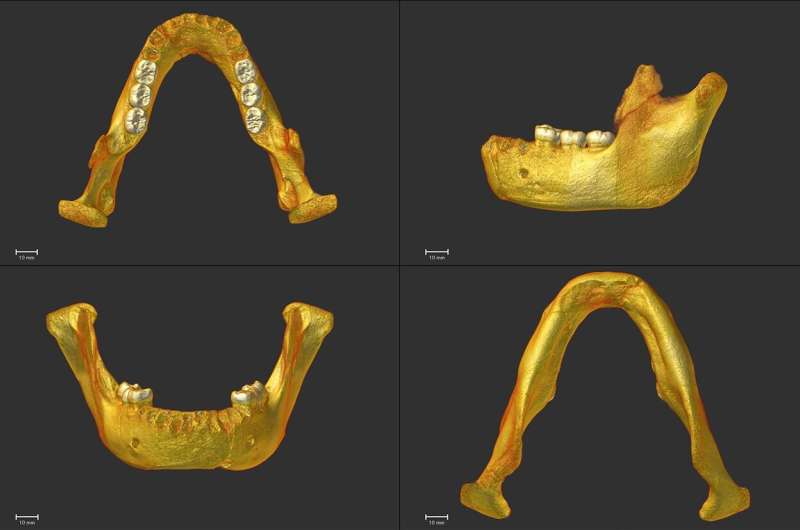The settlement of Europe could be the result of several imigration waves by a single population

The Dental Anthropology Group of the Centro Nacional de Investigación sobre la Evolución Humana (CENIEH), in collaboration with the paleoanthropologist Amélie Vialet of the Muséum National d'Histoire Naturelle (MNHN) in Paris, has just published a detailed external and internal study of the molars in the mandible from the French site of Montmaurin-La Niche in the Journal of Human Evolution, whose results strengthen the hypothesis that the settlement of Europe could have been the result of several waves of migration at different times by a common source population.
The aim in this paper, led by the researchers Marina Martínez de Pinillos (CENIEH) and Laura Martín-Francés (CENIEH and PACEA-University of Bordeaux), is to shed light on the origin of the Neanderthals. The latest data obtained from paleontological and geomorphological studies place the Montmaurin-La Niche mandible in a chronologically intermediate position between the fossils of the Middle Pleistocene and the Neanderthals.
The micro-computed axial tomography (microCT) technique has enabled the molars in this mandible to be compared with the external and internal structures of over 400 other molars from the European, Asian and African Pleistocene and Holocene.
This exhaustive metric and morphological analysis has revealed that, while the mandible is more closely related to African and Eurasian populations from the Early and Middle Pleistocene, the enamel and dentine morphology and pulp cavity proportions are similar to those in Neanderthals. "Nevertheless, the absolute and relative enamel thickness values (2-D and 3-D) show greater affinity with those exhibited by certain Early Pleistocene hominins," says Martínez de Pinillos.
Possible hybridization
Over recent decades, finds of human fossil remains from the European Middle Pleistocene have prompted the debate on the evolutionary scenario of the genus Homo on that continent to be reopened. "The great variability we find among the European Middle Pleistocene fossils cannot be ignored in studying human evolution on our continent," says Martín-Francés.
This variability in European Middle Pleistocene populations could indicate different migrations at different times and/or fragmentation of the population, thought it might also be due to possible hybridization between residents and new settlers.
More information: Marina Martínez de Pinillos et al. Inner morphological and metric characterization of the molar remains from the Montmaurin-La Niche mandible: The Neanderthal signal, Journal of Human Evolution (2020). DOI: 10.1016/j.jhevol.2019.102739
Journal information: Journal of Human Evolution
Provided by CENIEH




















